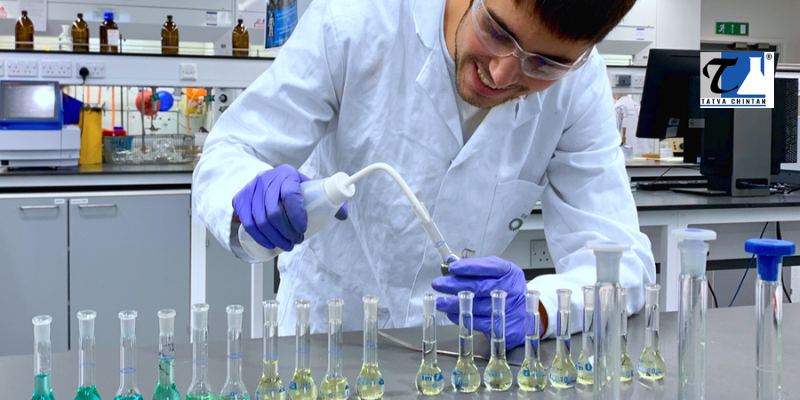Explain How TETRA ETHYL AMMONIUM TETRAFLUOROBORATE is used in industry
TETRA ETHYL AMMONIUM TETRAFLUOROBORATE is a crystalline powder or white crystal soluble in acetonitrile, alcohol, and water. It is a chemical product that finds many industrial applications in chemical companies because of its properties.
TETRA ETHYL AMMONIUM TETRAFLUOROBORATE'S Industrial Applications
TETRA ETHYL AMMONIUM TETRAFLUOROBORATE is a hygroscopic substance incompatible with a strong oxidizing agent. It has several industrial applications, which may include the following:
1. Phase transfer catalyst
TETRA ETHYL AMMONIUM TETRAFLUOROBORATE finds application as a Phase Transfer Catalyst (PTC) in organic synthesis. Nowadays, PTC is an important method of organic synthesis for most chemical companies.
A phase transfer catalyst would facilitate the transfer of a reacting species from one phase (the aqueous phase) to another (the organic phase) so that a reaction could happen. However, due to the separation of these species by an interface, many chemical reactants cannot react or collide. A PTC has been used to find solutions to these issues.
The use of these catalysts is beneficial not only in organic chemistry but also in inorganic chemistry, electrochemistry, photochemistry, and particularly polymer chemistry. Additionally, it has helped conduct reactions between organic compounds and potent inorganic oxidants like hypochlorite, dichromate, permanganate, and hydrogen peroxide.
Additionally, phase transfer catalysis is not just limited to anions; some research has been done on the transfer of molecules, radicals, and cations. A reverse form of phase transfer catalysis has also been documented. In this reverse type, the anion is moved from the organic phase to the aqueous phase.
Among the main benefits of phase transfer catalysts are the following:
1. It minimizes the production process's consumption of raw materials and organic solvents.
2. By using this method, mild reaction conditions can be maintained for the reaction to occur.
3. It aids in the control of both reaction conditions and rate, as well as product yields.
4. Electrolyte addictive.
In the capillary electrophoretic separation of the polyphenols observed in grape seed extracts, TETRA ETHYL AMMONIUM TETRAFLUOROBORATE is employed industrially as an electrolyte additive. For this type of addiction, TETRA ETHYL AMMONIUM TETRAFLUOROBORATE is used by chemical companies manufacturing consumable products.
Electrolytes are needed for normal bodily functions. They are important for hydration, blood pressure regulation, and muscle and nerve function. Also, when these electrolytes dissolve in water, they conduct electricity. They are present in drinks and food in the form of essential minerals. Examples are sodium, potassium, phosphate, chloride, calcium, and more.
Furthermore, TETRA ETHYL AMMONIUM TETRAFLUOROBORATE can be used industrially as a supporting electrolyte in several other processes. For example, as a supporting electrolyte, it is used in fabricating high-performance supercapacitors, synthesizing conjugate oligomers, and in electrocatalytic reduction.
2. Chemical Synthesis
TETRA ETHYL AMMONIUM TETRAFLUOROBORATE is involved in the synthesis of conducting polythiophenes. In a chemical synthesis process, one or more chemical reactions convert a reactant or starting material into a product or a series of products.
Chemistry research, particularly organic chemistry research, relies heavily on chemical synthesis, as it is the basis for discovering new compounds with new physical or biological characteristics. This makes TETRA ETHYL AMMONIUM TETRAFLUOROBORATE an important chemical used in research processes.
In most cases, using TETRA ETHYL AMMONIUM TETRAFLUOROBORATE in the synthesis reaction often results in the release of energy. The reaction is exothermic, but it is possible to have an endothermic outcome. Synthesis reactions are among the main categories of chemical reactions, including combustion reactions, single displacement reactions, and double displacement reactions.
3. Preparing some organic salts of fluoric acids
Several salts of fluoric acids can be prepared using TETRA ETHYL AMMONIUM TETRAFLUOROBORATE, among other organic compounds. Hydrofluoric acid is a very strong, corrosive acid. But rather than being a strong acid, it is categorized as weak. Since all other hydrohalic acids are considered strong, hydrofluoric acid is the only one that isn't.
Hydrofluoric acid finds many industrial applications as a reactive, addictive, or surface treatment agent. It is employed in various industries, including manufacturing photovoltaic cells and industrial maintenance in the food sector.
There are some risks associated with the use of hydrofluoric acid. However, despite the risks involved, there are either few or no alternatives available. Due to this, both its production and its demand on a global scale are increasing. This spike in demand also makes TETRA ETHYL AMMONIUM TETRAFLUOROBORATE a major substance for many chemical companies.
4. Preparation of Tetra Butyl Ammonium Salts
Other tetra butyl ammonium salts are also made in aqueous solutions using TETRA ETHYL AMMONIUM TETRAFLUOROBORATE.
Common examples of TETRA BUTYL AMMONIUM salts include hyaluronic acid, fluoride, ligands, chloride, pyrrole, and many more.
Conclusion
TETRA ETHYL AMMONIUM TETRAFLUOROBORATE, a soluble crystalline powder, is an important substance for many chemical companies. Its common industrial applications may include its use as a phase transfer catalyst in organic synthesis, the preparation of some organic salts of fluoric acid, and as an addictive electrolyte, among many other uses.






Comments
Post a Comment